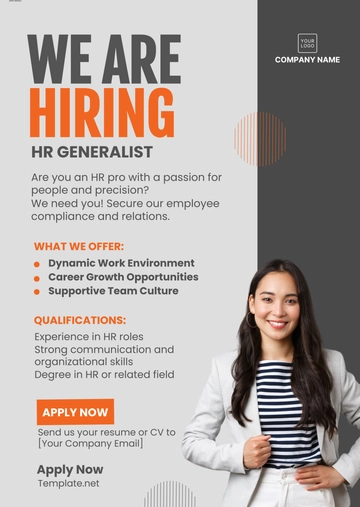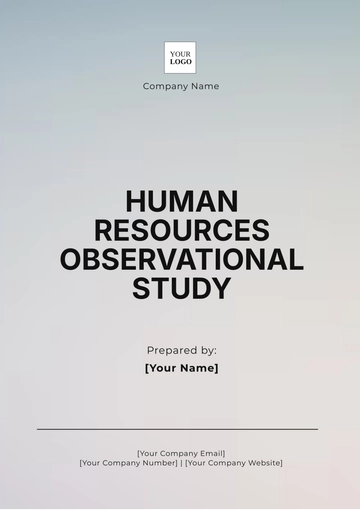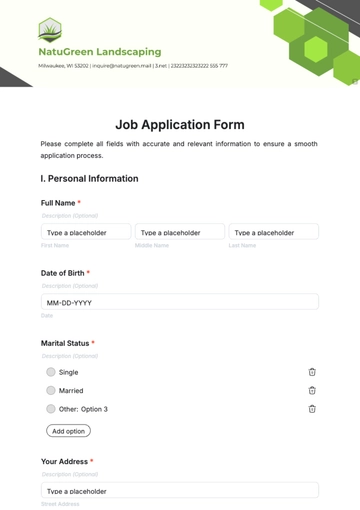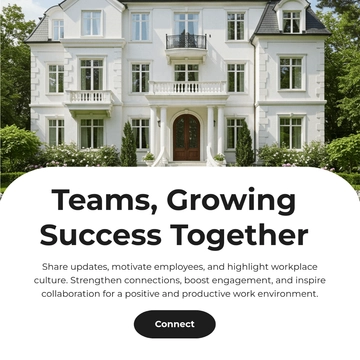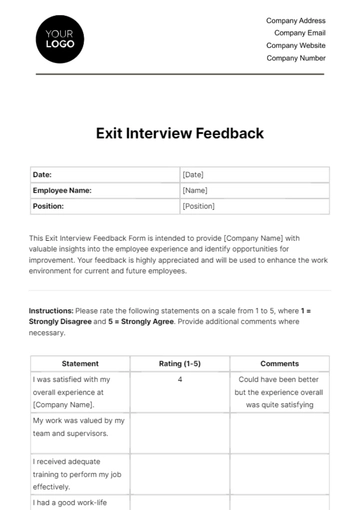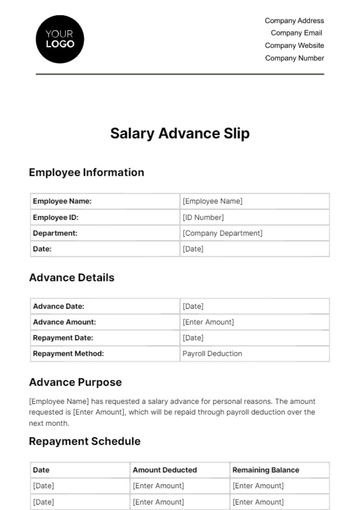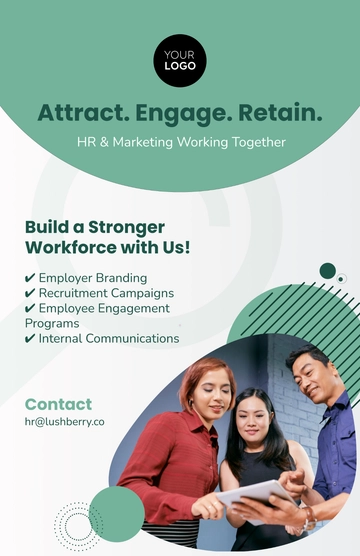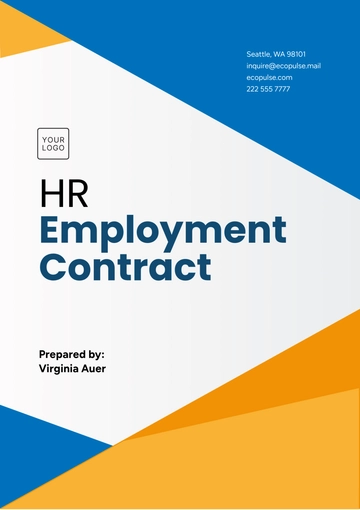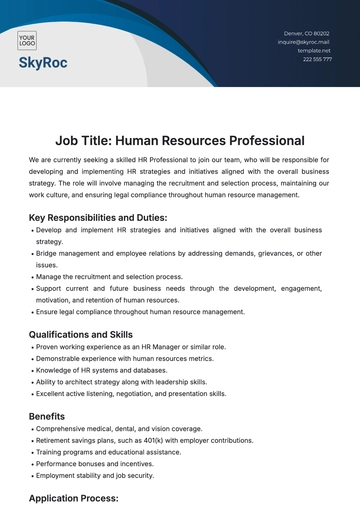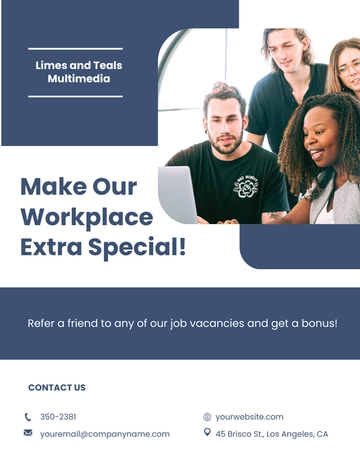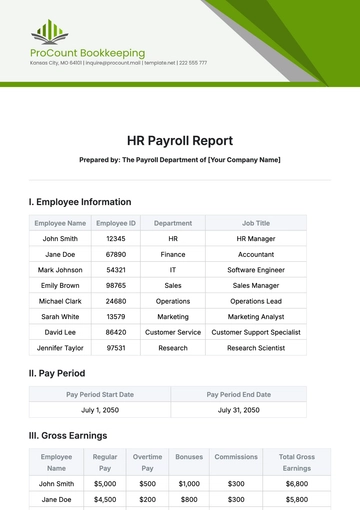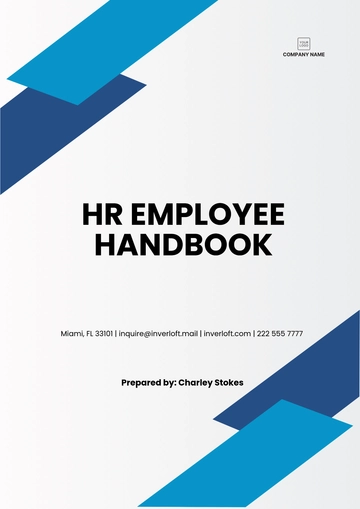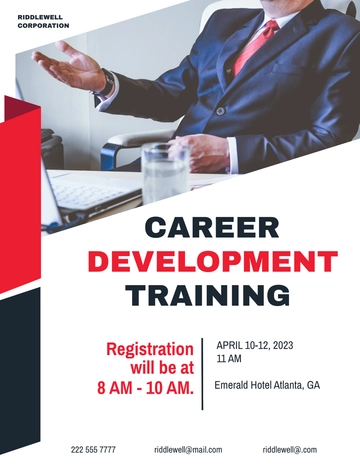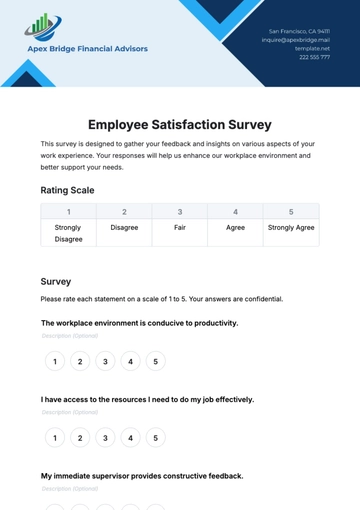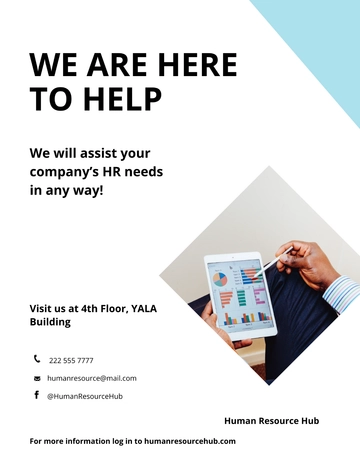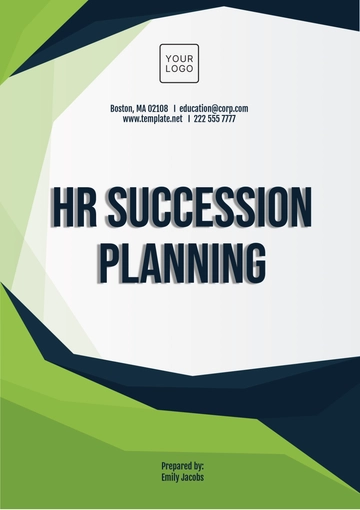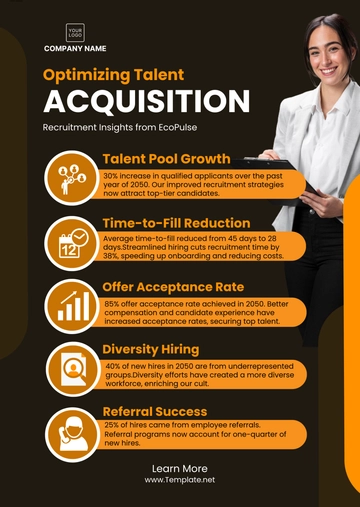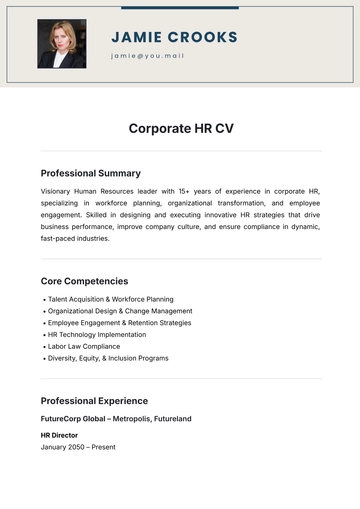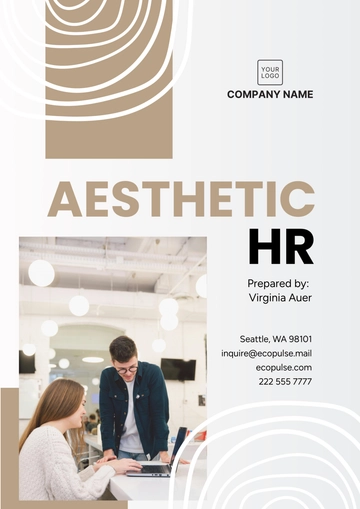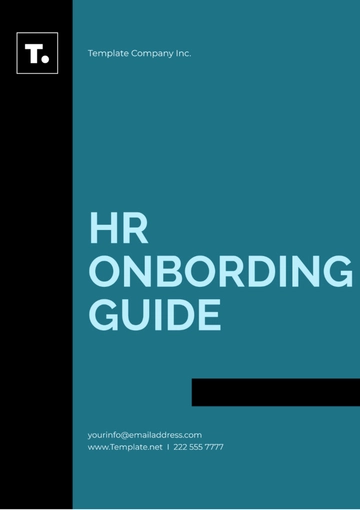Free Restaurant HR Strategy

I. Introduction
The Human Resources (HR) Strategy for [Your Company Name] is a meticulously designed plan that aims to align our human resources with the overall mission and goals of our restaurant. It serves as a roadmap to ensure we have the right people in the right roles, providing them with the necessary training and development opportunities, and fostering a positive and inclusive work environment.
A. Purpose
The purpose of our HR Strategy is multi-faceted and designed to support the overall success of our restaurant. The key objectives are:
Attract and Retain Top Talent: Our HR strategy is designed to attract the best talent in the restaurant industry. We aim to create an environment that not only attracts such talent but also encourages them to stay with us for the long term. This involves offering competitive compensation, growth opportunities, and a positive work environment.
Develop Employee Skills and Knowledge: We believe in the continuous growth and development of our employees. Our HR strategy includes comprehensive training and development programs to enhance our employees’ skills and knowledge, enabling them to perform their roles effectively and contribute to the restaurant’s success.
Foster a Positive and Inclusive Work Culture: We aim to create a work culture that is positive, inclusive, and supportive. We believe that a happy and engaged workforce is key to delivering excellent customer service and achieving our business goals.
Ensure Compliance with Labor Laws and Regulations: Compliance with labor laws and regulations is a critical aspect of our HR strategy. We strive to create a fair and respectful workplace that adheres to all relevant laws and regulations.
B. Scope
Our HR Strategy covers a broad spectrum of key areas, each of which plays a vital role in the successful operation of our restaurant:
Recruitment and Selection: This involves attracting the best talent in the industry, conducting thorough interviews and assessments, and selecting the most suitable candidates for each role.
Training and Development: This includes providing comprehensive training programs for new hires, ongoing training for existing employees, and development opportunities for career advancement.
Performance Management: This involves setting clear performance expectations, providing regular feedback, and conducting performance appraisals to recognize good performance and identify areas for improvement.
Employee Engagement and Retention: This includes creating a positive and inclusive work environment, recognizing and rewarding employee contributions, and implementing strategies to retain our top talent.
Compliance and Legal Aspects: This involves ensuring compliance with all relevant labor laws and regulations, handling legal aspects related to employment, and maintaining a safe and respectful workplace.
II. Recruitment and Selection
A. Recruitment Strategy
Our recruitment strategy is a critical component of our HR Strategy. It is designed to attract the best talent in the restaurant industry to [Your Company Name]. This involves:
Developing Clear and Attractive Job Descriptions: Our job descriptions are designed to be clear, comprehensive, and attractive. They accurately reflect the roles and responsibilities of each position, outline the skills and qualifications required, and highlight the benefits of working with us. This clarity helps potential candidates understand what is expected of them and how they can contribute to our restaurant’s success.
Utilizing Various Recruitment Channels: We leverage a variety of recruitment channels to reach a wide pool of potential candidates. This includes online job boards, social media platforms, industry events, and networking. By diversifying our recruitment channels, we can attract a broad range of candidates with different skills and experiences.
Implementing a Rigorous Selection Process: Our selection process is designed to ensure we hire the best candidates for each role. It includes initial screening of applications, conducting interviews, checking references, and making job offers. This rigorous process helps us assess each candidate’s suitability for the role and their potential fit with our restaurant’s culture.
B. Selection Process
Our selection process is a critical component of our recruitment strategy. It is designed to assess the skills, knowledge, and cultural fit of each candidate, ensuring that we hire the best talent for our restaurant. The following table provides an overview of the steps involved in our selection process:
No. | Step | Description |
|---|---|---|
1. | Initial Screening | This involves reviewing applications to shortlist candidates who meet the job requirements. |
2. | Conducting Interviews | Shortlisted candidates are invited for interviews where we assess their skills, knowledge, and cultural fit. |
3. | Checking References | We contact the references provided by the candidates to verify their past employment and performance. |
4. | Making Job Offers | Successful candidates are extended job offers. We negotiate employment terms that are mutually beneficial. |
Each step in our selection process plays a crucial role in ensuring we hire the best talent for our restaurant:
Initial Screening: The initial screening helps us filter out candidates who do not meet the basic requirements for the job. This allows us to focus our resources on the most promising candidates, improving the efficiency of our recruitment process.
Conducting Interviews: Interviews provide us with an opportunity to assess the skills, knowledge, and cultural fit of each candidate. They also allow us to gauge the candidate’s interest in the job and their potential to succeed in our restaurant.
Checking References: Reference checks provide us with additional insights into the candidate’s past performance and work ethic. They help us validate the information provided by the candidate and make an informed hiring decision.
Making Job Offers: Making job offers is the final step in our selection process. We strive to offer competitive compensation and benefits to attract and retain top talent.
Our selection process is not just about finding the right candidate for the job; it’s also about ensuring a good fit with our restaurant’s culture. We believe that employees who align with our values and culture are more likely to be engaged, perform well, and stay with us for the long term.
Moreover, our selection process is designed to be fair and transparent. We are committed to providing equal employment opportunities and do not discriminate based on race, color, religion, sex, national origin, age, disability, or any other protected status. By adhering to these principles, we ensure that our recruitment process is in compliance with labor laws and regulations, and we build a diverse and inclusive workforce that reflects the community we serve.
III. Training and Development
A. Training Programs
Training is a critical component of our HR strategy at [Your Company Name]. We believe in investing in our employees’ growth and development, and we have designed comprehensive training programs to enhance their skills and knowledge. The following table provides an overview of our training programs:
Training Program | Description | Frequency |
|---|---|---|
Orientation Training | This program introduces new hires to our restaurant’s culture, values, and operations. | Upon hiring |
Skill-Specific Training | This program focuses on developing specific skills required in the restaurant industry. | Bi-annually |
Leadership Training | This program is designed for potential and current restaurant managers. | Annually |
Each training program plays a crucial role in our HR strategy:
Orientation Training: The orientation training program is designed to help new hires acclimate to our restaurant’s culture and operations. It provides them with a solid foundation and prepares them for their roles, ensuring they can start contributing to our restaurant’s success from day one.
Skill-Specific Training: The skill-specific training program is crucial in ensuring our employees have the necessary skills to perform their roles effectively. By focusing on key skills such as customer service and food safety, we can ensure our employees are well-equipped to deliver exceptional service to our customers.
Leadership Training: The leadership training program is designed to develop our employees’ leadership skills. By investing in our potential and current managers, we can ensure we have strong leaders who can guide our teams and contribute to our restaurant’s success.
Training and development are crucial aspects of our HR strategy. By investing in our employees’ growth and development, we can enhance their skills and knowledge, improve their performance, and increase their job satisfaction. This not only benefits our employees but also contributes to our restaurant’s success.
Moreover, our training programs are designed to be comprehensive and tailored to the unique needs of our restaurant. This ensures that our employees receive relevant and practical training that they can apply in their roles. By providing our employees with the necessary training and development opportunities, we can equip them with the skills they need to deliver exceptional service to our customers.
B. Development Opportunities
At [Your Company Name], we believe in the continuous growth and development of our employees. We provide various development opportunities to help our employees grow in their careers. These opportunities are designed to enhance their skills, broaden their knowledge, and prepare them for future roles within our restaurant. The key development opportunities we offer include:
Cross-Training: Cross-training allows our employees to gain experience in different roles within our restaurant. This not only enhances their skills but also provides them with a broader understanding of our operations. It prepares them for future roles and promotes versatility within our team.
Opportunities for Promotion and Advancement: We believe in recognizing and rewarding the hard work and dedication of our employees. We provide opportunities for promotion and advancement to higher roles within our restaurant. This motivates our employees to perform their best and fosters a culture of growth and achievement.
Regular Performance Reviews: Regular performance reviews provide our employees with feedback on their performance and identify areas for improvement. They also help us understand our employees’ career aspirations and plan their development accordingly. This ensures that our employees are continuously learning and growing in their roles.
IV. Performance Management
A. Performance Appraisals
Performance appraisals are a key component of our performance management system. They provide a structured process for assessing our employees’ performance, providing feedback, and setting goals for future performance. The key steps in our performance appraisal process include:
Setting Clear Performance Expectations: At the beginning of each appraisal period, we set clear performance expectations for each employee. These expectations are aligned with our restaurant’s goals and provide a clear direction for our employees.
Providing Regular Feedback and Coaching: Throughout the appraisal period, we provide regular feedback and coaching to our employees. This helps them understand their strengths, identify areas for improvement, and take necessary actions to improve their performance.
Conducting Formal Performance Reviews: At the end of the appraisal period, we conduct a formal performance review. This involves assessing the employee’s performance against the set expectations, discussing their achievements and challenges, and setting goals for the next appraisal period.
B. Reward and Recognition
Reward and recognition are integral parts of our performance management system at [Your Company Name]. We believe in acknowledging the hard work and achievements of our employees, and we have implemented a comprehensive reward and recognition program to do so. This program is designed to motivate our employees, boost their morale, and foster a culture of appreciation and recognition. The key components of our reward and recognition program include:
Competitive Compensation and Benefits: We offer competitive compensation and benefits to our employees. This includes a fair salary, health benefits, and other perks. We regularly review our compensation package to ensure it remains competitive in the market and adequately rewards our employees for their hard work and dedication.
Recognition of Exceptional Performance: We believe in recognizing and celebrating exceptional performance. This could be in the form of verbal praise, certificates of achievement, or even monetary rewards. Recognizing exceptional performance not only rewards the individual but also sets a benchmark for others.
Celebrating Team and Individual Achievements: We regularly celebrate team and individual achievements. This could be in the form of team lunches, recognition in team meetings, or company-wide announcements. Celebrating achievements fosters a positive work environment and strengthens team spirit.
V. Compliance and Legal Aspects
A. Compliance
Compliance with labor laws and regulations is a fundamental aspect of our HR strategy. We strive to create a workplace that respects the rights of all employees and operates in accordance with the law. Our compliance efforts include:
Keeping Up-to-Date with Changes in Labor Laws: Labor laws and regulations are constantly evolving. We make it a priority to stay informed about these changes. Our HR team regularly reviews updates to labor laws and adjusts our policies and practices accordingly to ensure compliance. This proactive approach helps us avoid potential legal issues and ensures that our practices are fair and up-to-date.
Implementing Policies and Procedures to Ensure Compliance: We have implemented a range of policies and procedures to ensure compliance with labor laws and regulations. These policies cover areas such as equal employment opportunity, harassment, overtime, and leave, among others. They provide clear guidelines for our employees and managers, helping to prevent misunderstandings and disputes.
Regular Audits to Check Compliance: We conduct regular audits to check our compliance with labor laws and regulations. These audits help us identify any areas of non-compliance and take corrective action. By regularly monitoring our compliance, we can ensure that we are always operating within the law.
B. Legal Aspects
We also handle all legal aspects related to employment, including contracts, disputes, and terminations. This involves:
Drafting Clear and Fair Employment Contracts: We ensure that all our employment contracts are clear, fair, and in compliance with labor laws. These contracts outline the terms and conditions of employment, providing clarity for both the employee and the employer.
Resolving Disputes in a Fair and Respectful Manner: We are committed to resolving any disputes in a fair and respectful manner. We have a clear process for handling disputes, which includes open communication, mediation, and, if necessary, legal action.
Handling Terminations in Accordance with Labor Laws and Regulations: We handle terminations in a respectful manner and in accordance with labor laws and regulations. This includes providing adequate notice, paying any owed wages, and providing a clear reason for the termination.
VI. Summary
In summary, the Human Resources (HR) Strategy for [Your Company Name] is a comprehensive plan designed to align our human resources with the overall mission and goals of our restaurant. It serves as a roadmap to ensure we have the right people in the right roles, providing them with the necessary training and development opportunities, and fostering a positive and inclusive work environment.
Our HR strategy covers key areas such as recruitment and selection, training and development, performance management, employee engagement and retention, and compliance and legal aspects. Each of these areas plays a crucial role in the successful operation of our restaurant. For instance, our recruitment and selection strategies help us attract and retain top talent, while our training and development programs ensure our employees have the skills and knowledge they need to excel in their roles. Our performance management system helps us assess our employees’ performance, provide feedback, and set goals for future performance. Our employee engagement and retention strategies help us create a positive and inclusive work culture, and our compliance efforts ensure we adhere to all relevant labor laws and regulations.
Overall, our HR strategy is not just about managing our human resources; it’s about creating a workplace where our employees feel valued, respected, and motivated to perform at their best. By investing in our employees’ growth and development, recognizing their contributions, and maintaining a fair and respectful workplace, we can ensure the success of our restaurant and deliver exceptional service to our customers. This comprehensive HR strategy is the backbone of [Your Company Name]'s commitment to excellence in the restaurant industry.
- 100% Customizable, free editor
- Access 1 Million+ Templates, photo’s & graphics
- Download or share as a template
- Click and replace photos, graphics, text, backgrounds
- Resize, crop, AI write & more
- Access advanced editor
Develop strategic HR initiatives with the Restaurant HR Strategy Template available on Template.net! This comprehensive resource provides an editable platform to define human resources strategies and objectives. Customize the template using its customizable features and integrated AI Editor Tool to align with your restaurant's HR goals. Get started right away!
